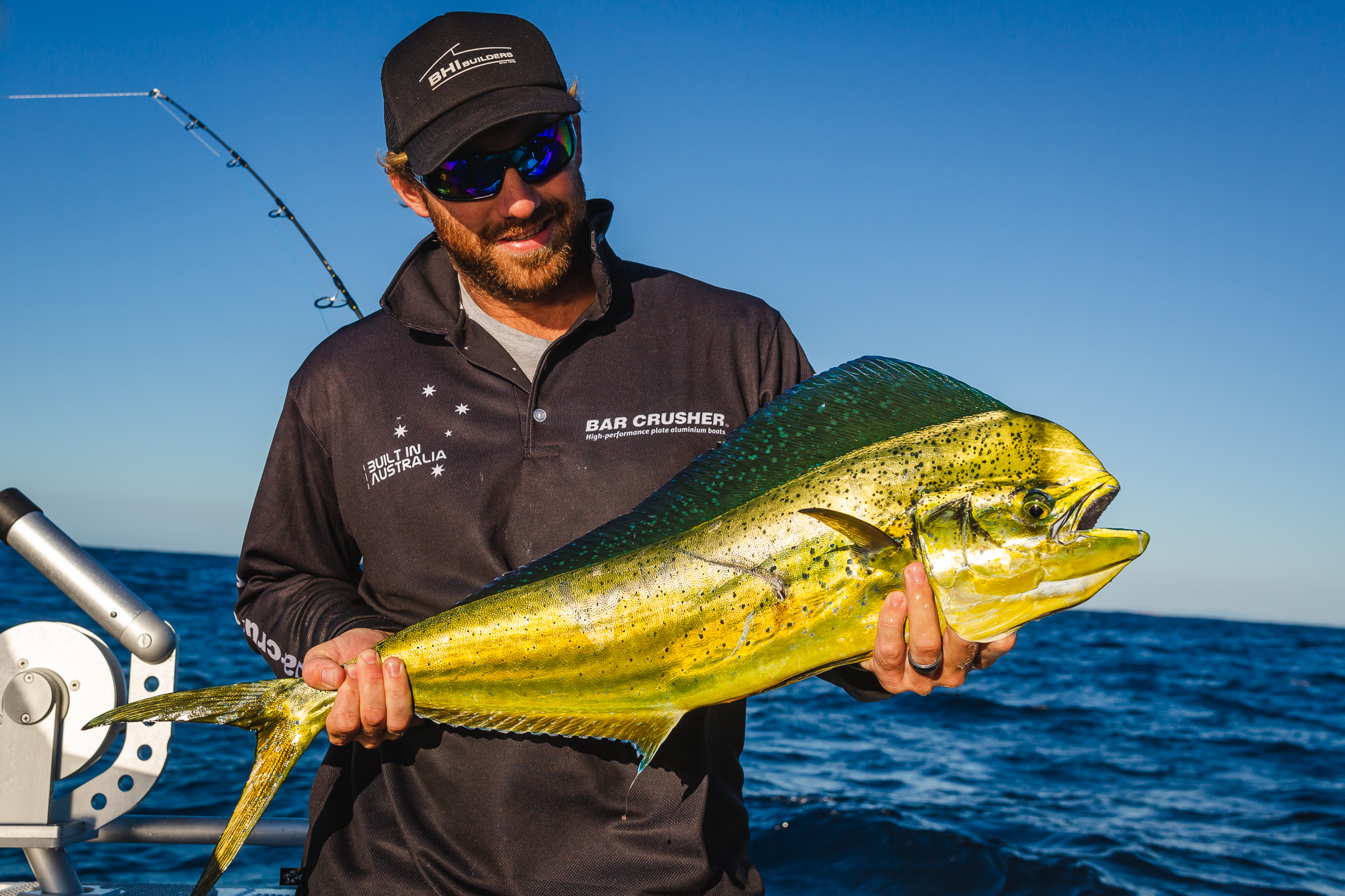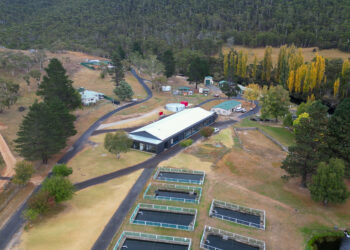
AS you’re reading this, the NSW DPI Fisheries FADs team is hard at work preparing for the upcoming 2020/2021 FADs season deployments. Our off-season work involves cleaning and maintaining FAD buoys, checking the GPS systems on individual buoys and replacing ground tackle (anchors, chains and ropes). Most importantly, we’ve been working on new FAD locations!
The annual FAD season generally kicks off in September with the first FADs deployed in northern NSW to take advantage of the tongues of warm blue water that push down with the start of the East Australian Current (EAC). More FADs are deployed southwards over the coming months as the EAC picks up speed, bringing blue water — and hopefully schools of hungry pelagic sportfish! — right along the NSW coast. The last few FADs located off the far south coast are usually in the water by the end of October. The deployment of FADs is obviously very weather dependant, with light winds and low swells required to safely deploy the bulky and heavy buoys and ground tackle. The process involves the FADs team and its contractors carefully checking the latest weather information, all the time ready to hit the road if a suitable weather window appears. The aim at this time of year is to get the FADs deployed as quickly as possible so anglers can get out there and enjoy great bluewater sportfishing.
Once the FADs are deployed along the coast, we keep a careful eye out for any that may go off station. The reasons a FAD might go missing are many and varied, but can include strong winds and heavy swells either causing the anchor rope to break or the FAD to drag. Other reasons for missing or lost FADs can involve the FAD being run over by a container ship (even though FAD locations are marked on navigation charts and are installed with navigation lights), the anchor rope being deliberately cut or by a boat illegally tying up on a FAD and causing gear failure.
The latter unfortunately happens more often than we’d like. The fact is our FADs are designed to be easily deployed and retrieved after each season for maintenance. The anchoring systems are unable to cope with the extra weight and pressure of a boat being tied up on the buoy. This is why the buoys have signs on them advising boaters of the heavy fines which apply if you tie up on a FAD. Apart from the risk of a fine, tying up on a FAD increases the chance of it breaking free, thus reducing your fishing opportunities. So please don’t tie up on FADs! The other key take home messages for enjoying a safe and productive FADs season is to remember to respectfully share the resource with other users, including spearfishers, charter boats and other recreational fishing boats. Check out the FADS Fishing Code of Conduct here.
An important point to remember is that key species like dolphinfish don’t necessarily aggregate immediately adjacent to the FAD buoy. A FAD works by attracting and aggregating fish in its general location. You’ll often find the best quality fish are quite a distance away from the actual FAD, especially if there are a lot of boats around. The 2019/2020 season saw four additional boys placed at key Sydney FAD locations to help ease congestion.
Each year, the NSW DPI FAD program continues to look at ways of expanding our network and providing more fishing opportunities. The 2020/2021 FADs season is set to be the biggest and best yet, with more FADs at key areas along the coast to be deployed to provide even more fishing opportunities. Stay tuned to our website and the DPI Fisheries Facebook page for more info on FAD deployments and fishing reports. The FADs Program is another great example of your fishing fees at work!
For more information: www.dpi.nsw.gov.au
















